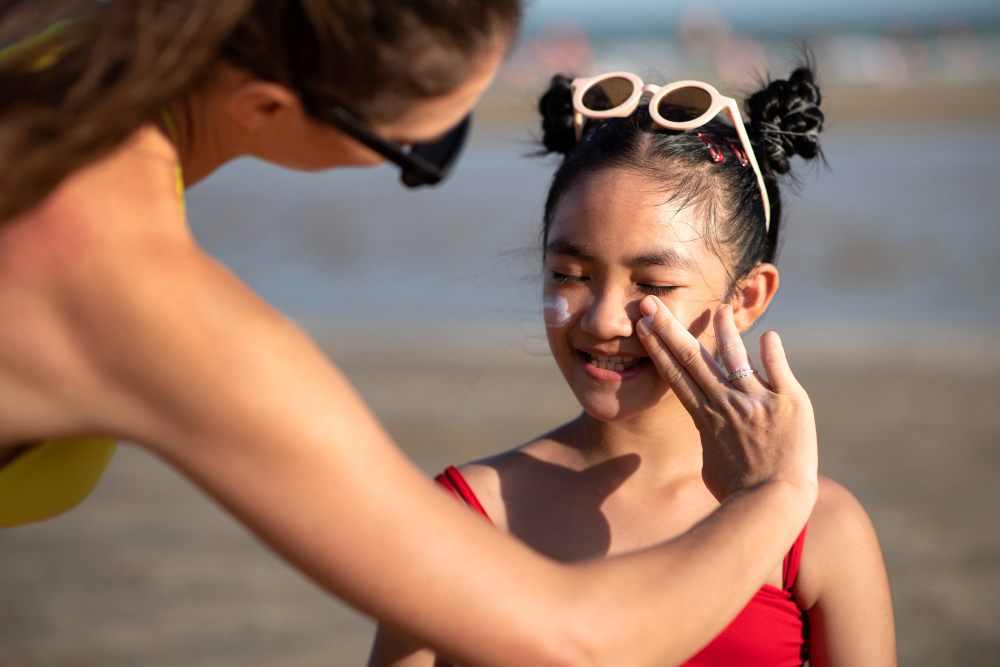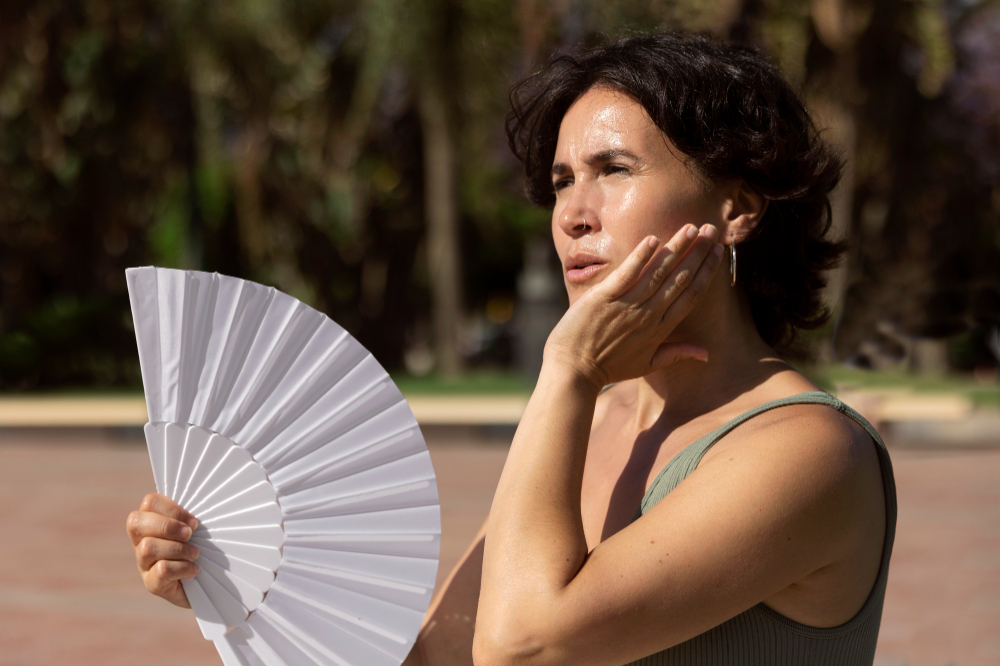THE TRUTH ABOUT 7 SUN PROTECTION MYTHS
MYTH 1: I CAN’T GET A SUNBURN ON A CLOUDY DAY.
To gauge sun ray intensity and appropriate skin protection measures, refer to the UV index in weather reports. Once the UV index reaches 3 or higher, take precautions to shield your skin from harmful rays.
MYTH 2: I DON’T NEED SUNSCREEN IF I’M UNDER A BEACH UMBRELLA.
A beach umbrella offers protection from direct sun rays, but it doesn’t shield against indirect rays. Water, sand, and smooth, light surfaces like concrete reflect the sun’s rays. When these rays bounce off the ground, they can still reach you and lead to sunburn, even if you’re under a beach umbrella or parasol.
MYTH 3: IT’S SAFER TO TAN AT A TANNING SALON THAN IN THE SUN.
MYTH 4: A FEW SESSIONS AT THE TANNING SALON WILL GIVE ME A BASE TAN THAT WILL PROTECT MY SKIN FROM SUNBURN.
MYTH 5: MY FOUNDATION HAS AN SPF OF 50, SO I DON’T NEED TO APPLY SUNSCREEN ON MY FACE.
MYTH 6: PEOPLE WITH DARK SKIN, OR WHO TAN EASILY, DON’T NEED TO USE SUNSCREEN.
Individuals with dark skin or those who tan easily should not assume they are immune to the harmful effects of the sun. While dark skin contains ample melanin, which provides some protection against the sun’s rays, it does not grant full immunity. Additionally, the skin does not become accustomed to the sun’s effects, dispelling a common misconception.
MYTH 7: IT’S IMPORTANT TO TAN SO MY BODY CAN PRODUCE VITAMIN D.
Your body requires approximately 20 minutes of sun exposure on an area comparable to your face and hands to generate sufficient vitamin D for your daily needs. Importantly, your skin need not change color for this process to take place.
While the application of sunscreen can diminish the skin’s ability to synthesize vitamin D, Health Canada emphasizes the significance of safeguarding your skin from sun-induced damage. Meeting your vitamin D requirements through dietary sources or supplements is a recommended alternative. If you have inquiries or uncertainties about sun exposure’s impact on your health, consult with your pharmacist.
Want To Know More

Sunscreens
Discover the characteristics of a good sunscreen to protect yourself against UVA rays
Read More

medication & Sunlight
Some medications can increase skin sensitivity to sunlight and cause allergic reaction
Read More

heatStrokes
It is important to understand the risks associated with extreme heat and heatstroke for people
Read More

Skin Redness
Skin redness, a common issue with various causes, can result from sunburn, irritation, allergies, or skin conditions. To discover more about its triggers and effective remedies.